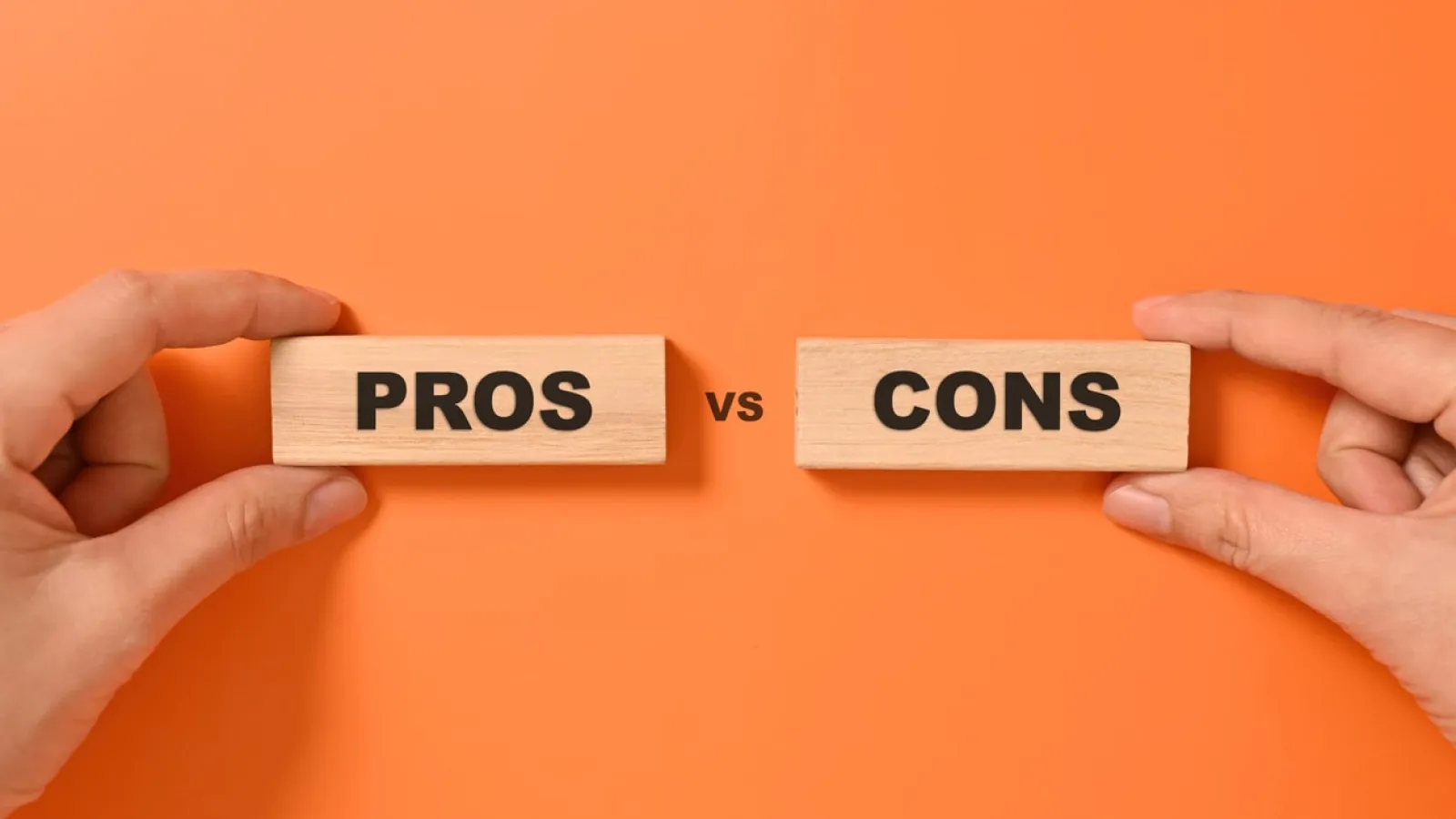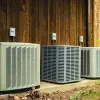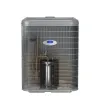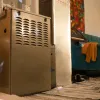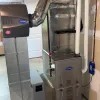Are you tired of dealing with high humidity inside your home?
Even in air conditioned houses, many people struggle with high indoor moisture levels. This problem can make you feel sweaty, clammy, and generally uncomfortable.
You might have heard that whole-house dehumidifiers can solve this problem. And you heard right!
By installing a whole-house dehumidifier in your home, you can enjoy a dry, comfortable environment year-round. Here in Atlanta, that’s a real achievement! It’s a major comfort upgrade in other green grass climates as well.
Of course, every home improvement or appliance upgrade has trade-offs.
With whole-house dehumidifiers, the trade-offs are minor. But they’re still worth considering.
Let’s take a close look at whole-house dehumidifier pros and cons, paying special attention to how you can offset the cons to maximize enjoyment of your dehumidifier!
Pro #1: Way better indoor comfort
This is the main advantage of whole-house dehumidifiers. In places with humid spring, summer, and fall seasons, you’re going to feel so much more comfortable!
Even though your home is air conditioned, you can still suffer from high indoor humidity. There are two main reasons for this:
- Many homes have oversized air conditioners. When your AC is too big for your home, it short-cycles, meaning it runs at full blast for a very short period of time and then turns off. Humidity creeps up in between the short cycles, and the AC will rarely bring it below the comfort threshold.
- Air conditioners sit mostly idle during spring and fall. For your AC to lower humidity, it needs to be running. But spring and fall temperatures aren’t always high enough for AC to turn on. Unfortunately, it is super humid in our area during spring and fall. So even though the AC isn’t needed to lower temperature, you’re left wanting some type of machine that can reduce indoor humidity.
Enter the whole-house dehumidifier! These units interface with your indoor HVAC equipment and duct system to remove moisture from your indoor air.
When you install one, you’ll also get a new thermostat that has humidity controls. Just set the relative humidity (RH) to a comfortable level (typically 55%-65%) and start feeling more comfortable!
Con #1: Slightly higher energy use
When you get a whole-house dehumidifier, you’re adding an appliance to your home. All else being equal, it will increase your energy use.
But it probably won’t increase it by a lot.
Compared to air conditioning and heating systems, whole-house dehumidifiers use less energy. And if you mostly use your whole-house dehumidifier during the cooling season (i.e. the same time of year you’re using your AC), keep this in mind:
You might not need to run your AC as often. This can help offset the operating costs of the whole-house dehumidifier.
Here’s what we mean. Before getting a whole-house dehumidifier, many people set their thermostats to 72 or 73 during the summer. Otherwise, the AC wouldn’t run enough to lower humidity to anything approaching a tolerable level.
But with a whole-house dehumidifier, your humidity is always perfect.
After installing one, many people don’t feel the need to set their thermostats as low as 73 degrees during the summer. Thanks to always-low humidity, they feel comfortable even when the thermostat is set to 75-77 degrees.
By not running the air conditioner as often, you might be able to cancel out part of the (already low) cost of running your dehumidifier.
Pro #2: Fewer indoor allergy problems
High indoor humidity encourages dust mite proliferation and mold growth. Both of those things can really wreak havoc on your allergies.
Many people who install whole-house dehumidifiers notice that their allergies clear up within weeks. Some folks are also so habituated to having runny noses and sneezing all the time that they don’t realize that high humidity is to blame. Then, when they get the whole-house dehumidifier, they start feeling relief. For the first time!
So, in addition to just generally feeling dry and comfortable, there’s a good chance you’ll be sneezing less and not having to deal with itchy eyes or congestion.
Con #2: Additional HVAC maintenance
A whole-house dehumidifier is a whole other machine you’ll have to maintain. There’s really no way around that.
The good news? Dehumidifier maintenance is super simple.
And it’s particularly simple for a technician who is already at your home to perform an air conditioner tune-up! In fact, we offer whole-house dehumidifier maintenance as an add-on for our Priority Plan customers who already use us for AC maintenance.
Whole-house dehumidifier maintenance consists of:
- Verifying proper operation of the unit (i.e. Is it lowering humidity as it should?)
- Checking the drain line and flushing it out if needed
- Replacing or cleaning the air filter inside the unit
As long as these tasks are performed regularly (and, in the case of the filter, per the manufacturer’s instructions), you can maximize the lifespan of your whole-house dehumidifier.
Pro #3: You’ll never see or hear it.
Maybe you’ve used a portable dehumidifier in the past. These can be convenient for small spaces, but…
- They can only dehumidify a room or two.
- Some models are noisy.
- You have to manually pour out the water; otherwise, it stops running.
A whole-house dehumidifier puts an end to all of that!
As the name implies, these units can remove moisture from your whole house. They use your existing duct system to do so.
And since a whole-house dehumidifier lives inside your attic, crawlspace, or basement, you never have to see or hear it. It just does its thing and never gets in your way.
Oh, and you won’t have to manually toss out the water. The water drains away from your home through a dedicated drain line. It really is a “set it and forget it” machine!
Con #3: Many HVAC companies don’t install them properly.
It’s true! The most common way to install whole-house dehumidifiers is the “return-to-return” method. Here, the unit receives air from your existing HVAC return duct, removes the moisture, and then pushes the dry air into the return plenum.
Technically, this is a manufacturer-approved installation method. But it’s not ideal.
Why don’t you want your whole-house dehumidifier to be installed this way? It’s simple. This method can actually increase the humidity in your home before lowering it again.
When you send the dry air back into the HVAC system’s air return, it moves across the AC’s evaporator coil. During the summer, that coil is going to be wet. As the dry air moves over the coil, it actually picks up some of that moisture, bringing humidity back into your home!
Sure, it will eventually lower it to whatever humidity setting you specified on your thermostat, but you’ll be less comfortable in the meantime.
Unfortunately, most HVAC companies install whole-house dehumidifiers this way. Not us, though.
When we install a whole-house dehumidifier, we use a dedicated return-to-supply method whenever possible. Basically, we create a dedicated air return just for the dehumidifier. Then we send dry air from the unit into the HVAC system’s supply plenum, bypassing the wet evaporator coil.
This is an alternative manufacturer-approved installation method that makes your whole-house dehumidifier more effective and more efficient.
So, do the pros outweigh the cons?
If you struggle to control the high humidity inside your home, the pros of having a whole-house dehumidifier almost definitely outweigh the cons!
Plus, as we’ve seen, the cons are easily mitigated or offset.
If you live in Metro Atlanta and are wondering whether a whole-house dehumidifier makes sense for your home, give us a shout! We’ll visit your home, listen to your concerns, and point you toward the best solution for your needs and goals.
To get in touch call us today at (404) 798-9672 or schedule an appointment online!
